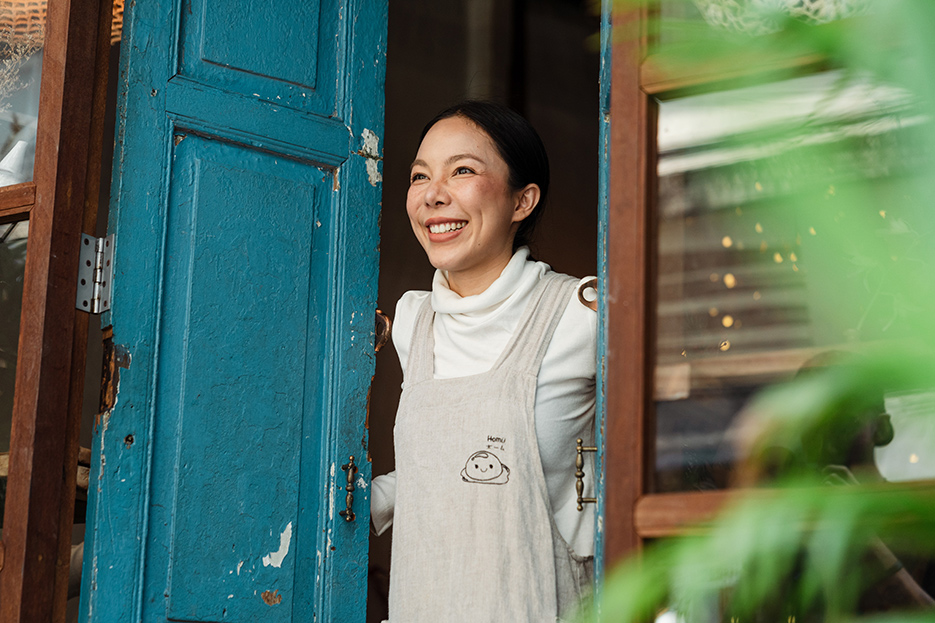When Businesses Are Born Global
Asia’s SMEs are no longer limited to local opportunities. For many, product demand on the other side of the globe is a true measure of success.
Traditionally, small businesses began in one’s backyard – selling to friends and neighbors. As these small businesses grew, they would have sought out markets close by or those which were culturally similar before venturing further afield.
But the rise of social commerce and online retail has made the world smaller and far-away markets more accessible. Many of today’s small- and medium-sized enterprises (SMEs) are leapfrogging the domestic-first mentality and targeting international consumers from the very start.
Typically helmed by younger founders who are well-travelled digital natives, these SMEs have identified customer niches remotely, and can target and profile audiences from thousands of miles away.
But the rise of social commerce and online retail has made the world smaller and far-away markets more accessible. Many of today’s small- and medium-sized enterprises (SMEs) are leapfrogging the domestic-first mentality and targeting international consumers from the very start.
Typically helmed by younger founders who are well-travelled digital natives, these SMEs have identified customer niches remotely, and can target and profile audiences from thousands of miles away.
Today’s SMEs are born global
Our most recent Asia Pacific SME research report[1] showed that the proportion of SMEs that export beyond Asia Pacific exceeded those who exported regionally for the first time ever in 2018. Since that report, shorter-distance cross border business within Asia has continued to rise, but overall the number of SMEs exporting beyond Asia Pacific is up 254% over four years.
Global exports have become more valuable too: the average annual revenue generated by exports beyond the region was US$641,000 in 2018; 13% higher than the comparable average value of exports within the region.
Global exports have become more valuable too: the average annual revenue generated by exports beyond the region was US$641,000 in 2018; 13% higher than the comparable average value of exports within the region.
Looking for opportunities
With Central and South Asia opening up and consumers purchasing more, the regions have emerged as the single most important destination for APAC SMEs. Almost two in five (37%) APAC SMEs are exporting there. Europe is a close second (33%) while the North America is the third most important market, at 24%.
The United States has long been seen as the world’s biggest economy but it’s also a highly competitive market that attracts the big players. SMEs are now better than ever at spotting under-served niche areas where larger competitors have yet to enter, making Central and South Asia a natural draw for them.
The United States has long been seen as the world’s biggest economy but it’s also a highly competitive market that attracts the big players. SMEs are now better than ever at spotting under-served niche areas where larger competitors have yet to enter, making Central and South Asia a natural draw for them.

Online e-commerce solutions have made it easier for SMEs to export across borders. And those same factors are making it less cumbersome for them to import from further afield, meaning product diversification and a more replete consumer offering is possible.
At the same time, import patterns are reflecting a similar shift toward globalization. Almost half (46%) of APAC SMEs are sourcing beyond domestic markets. Of these, 68% import from within APAC, while 62% import from other regions, up from just 26% in 2015.
This trend is set to continue growing exponentially. Savvy SMEs have learned that importing from other markets helps reduce their production costs and increase end-product quality. Technology continues to empower a borderless world, and online retail has become a necessity, not a luxury. APAC SMEs are increasingly enabled to grow their networks globally and source both suppliers and customers virtually.
For more updates on APAC trends for SMES, follow our LinkedIn page here.
At the same time, import patterns are reflecting a similar shift toward globalization. Almost half (46%) of APAC SMEs are sourcing beyond domestic markets. Of these, 68% import from within APAC, while 62% import from other regions, up from just 26% in 2015.
This trend is set to continue growing exponentially. Savvy SMEs have learned that importing from other markets helps reduce their production costs and increase end-product quality. Technology continues to empower a borderless world, and online retail has become a necessity, not a luxury. APAC SMEs are increasingly enabled to grow their networks globally and source both suppliers and customers virtually.
For more updates on APAC trends for SMES, follow our LinkedIn page here.
***




















 The Latest
The Latest